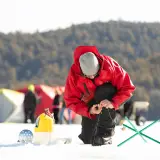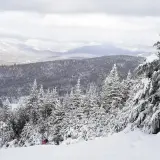The extraordinary twin history of Tahawus and Newcomb is being celebrated in a new museum, The Newcomb Historical Museum.
This town-wide endeavor included the complete restoration of the bungalow that houses the museum, a "kit home" that was put up in the early 1920s. Inside, the decorating and displays swing from very early in their history to the post-WWII developments that had a great impact on the town.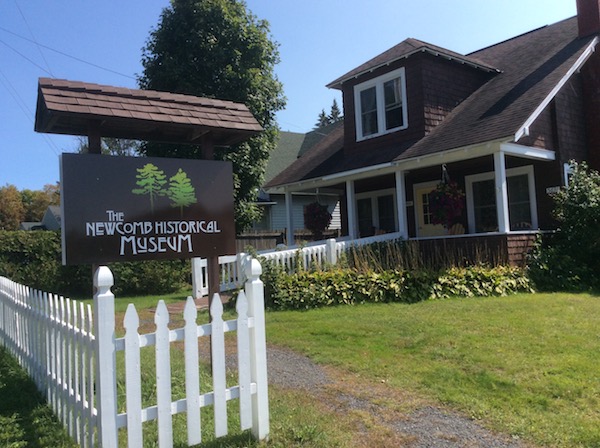
It all adds up to a charming experience.
Ghost town refugees
Their latest exhibit is “Mining in the Mountains: The Tahawus Story.” It celebrates their first round of collating and archiving over 20,000 photographic images, all from the ghost town of Tahawus, a company town of the National Lead mining enterprise that started in 1941.
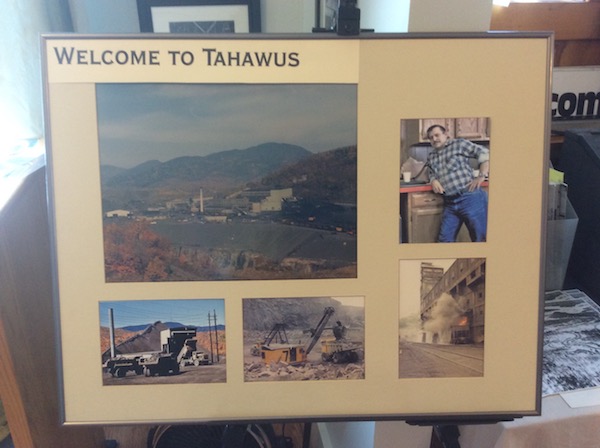
Many people are not aware of the extent of the mining operations that took place in the Adirondacks, and the impact they had on the population. At the turn of the last century, companies would recruit right off the New York City docks, bringing such diverse populations as Hungarian, German, Syrian, Swiss, Lithuanian, Russian, Columbian, Norwegian, Japanese, Spanish, Irish, Argentinean, Welsh, Italian, and Finnish miners working with their North American-born counterparts, who were from early colonies with Dutch, British, French-Canadian, African-American, and Native American roots.
The composition of the Adirondack Mountains is mineral rich, from the gorgeous garnet of the southern Adirondacks to the high quality iron from Lyon Mountain in the far north. In Tahawus, titanium, a post WWII "wonder metal," was the impetus to renewed mining efforts. This was an important ingredient for American space technology.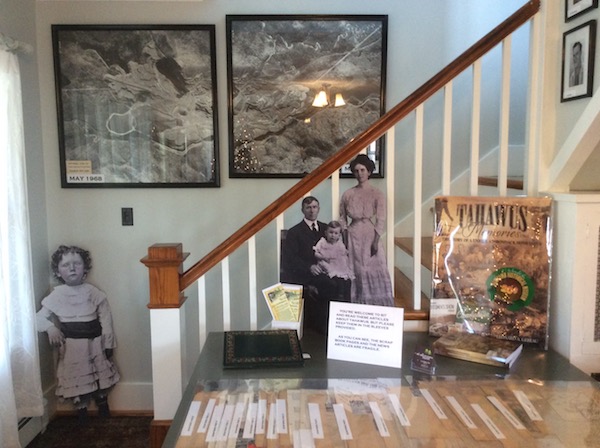
As the mine faded, so did the town; however, this story has a happy ending in that many of the buildings, and most of the people, moved to the eastern outskirts of Newcomb in 1963, in what is now Winebrook Hills.
As a result, almost nothing of the mining village remains visible without some hiking and exploring. This exhibit gives viewers a photographic opportunity to view the community buildings and the mines as they once existed. From aerial photos to community celebrations, glimpses of this once-vibrant community live on at the museum.
For more about this amazing event, read the blog post, The moving village of Tahawus.
Adirondack town
Even in an area known for deep forest, high mountains, and remoteness, Newcomb had a bit more of all of these. This resulted in a relatively late town development compared to other settlements. On March 15, 1828, the town formed from tracts previously designated as part of Minerva and Moriah.
Lumbering, mining, and the "sporting life" became the town's industries. Back then, the phrase Adirondack Sportsmen did not mean organized sports like baseball or horse racing. Then, it was the enjoyment of the forest, with hiking, hunting, fishing, paddling, and other outdoor activities prominent in the hunting lodges and gentlemen's clubs of the time.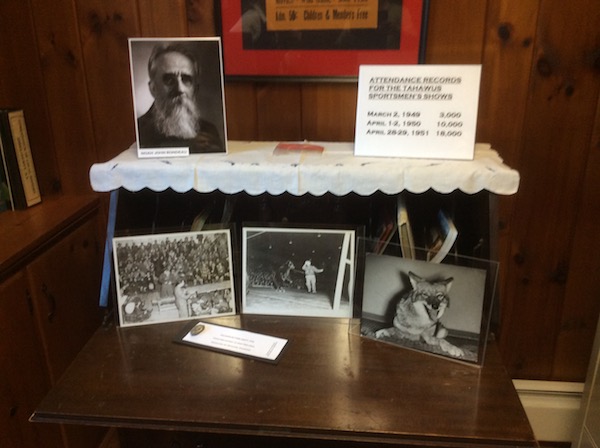
The Tahawus Club began life in 1876 as the Preston Ponds Club, referencing the three small sheets of water north of Lake Henderson. This was possibly the first such venture in the Adirondacks, sparked by a son of the daughter of Archibald McIntyre, who owned Adirondack Iron and Steel Company and leased the club their land. This proved so popular the club incorporated at the Adirondack Club in 1877 and then, in 1898, the Tahawus Club.
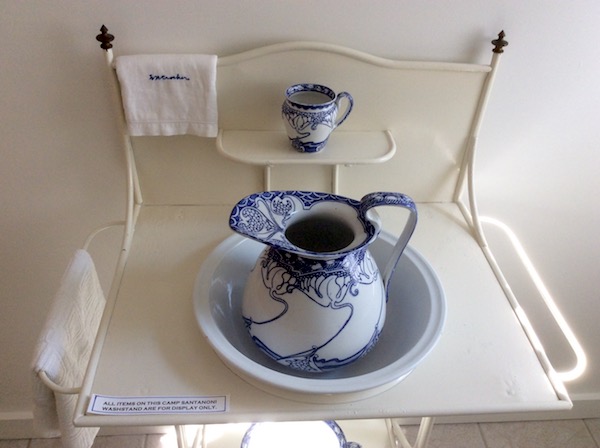
It was so popular among the movers and shakers of the time that this contrbuted to the ways the area passed into lasting fame, such as the construction of the celebrated Great Camp Santanoni and currently with the Teddy Roosevelt Weekend each fall.
Always there is the reminder of the woods, the animals, and the closeness with nature that characterized life in the Adirondacks.
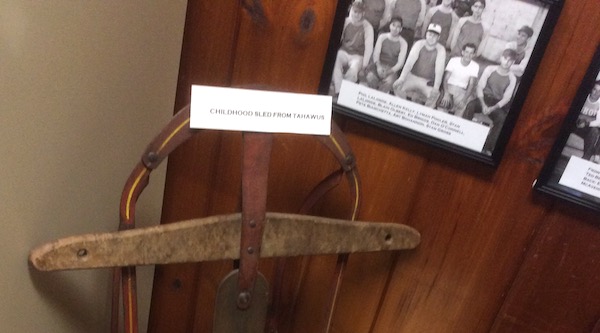
Find out more about how history interacts with nature in the blog post, A hike through history.
History every day
Do not miss the Bissell Room. This snapshot of one family commemorates a special grant from this mercantile family who was woven into the life of the town the way this velvet and silk quilt, the work of Annabelle Stone Bissell, blends many different elements.
Family photos, clothing and accessories, and other tokens of the past make for a warm and cozy place.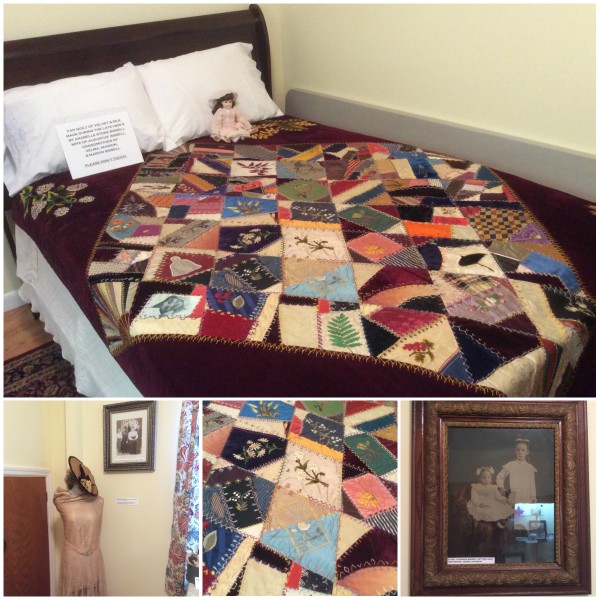
It is a reminder that, then and now, Adirondack life is not quite rural and not quite urban. Instead, it occupies a unique place where there were far more professions than farmer, since the terrain was so challenging for typical agriculture. Instead, settlers "farmed the forest," harvesting their living from the lumber and wildlife in the area, and coming together in towns which had similar amenities to city life, such as electric lights and running water.
The influence of the highest levels of society visited and created a demand that skilled labor could provide, from the finest cuisine to the most skilled handmade crafts.
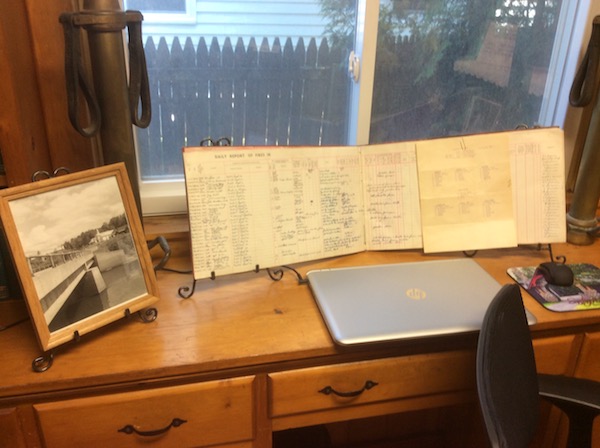
I am always fascinated by extensive records from when they were kept by hand and quill pen on paper.
Here, history isn't a relic of the past. Everyone can live there, just in the course of their usual day.
This museum had a great first season and will be open again in the spring. Be sure to put a visit on your "must see" list.
Choose a fun place to stay. Enjoy our dining. Those wishing to explore nature as the first Adirondack visitors did can visit the Adirondack Interpretive Center.
The book by Leonard Gereau, “Tahawus Memories 1941-1963: The Story of a Unique Adirondack Hometown,” is available for purchase through the museum.

